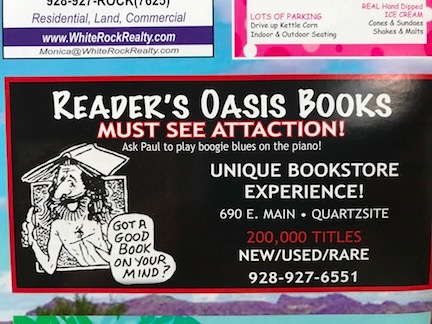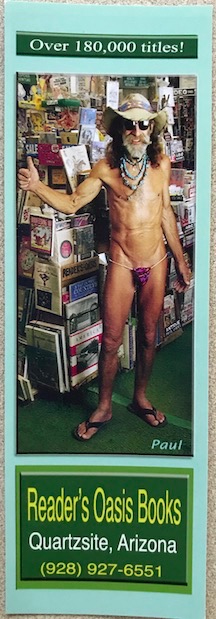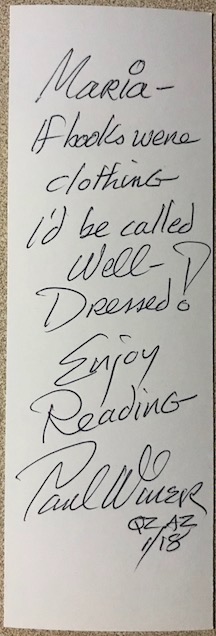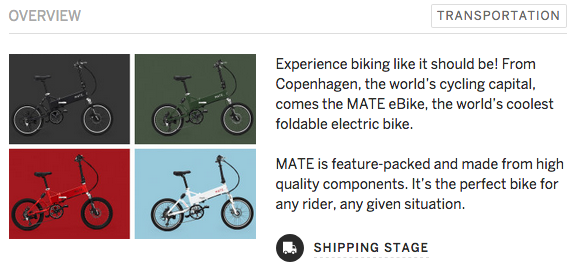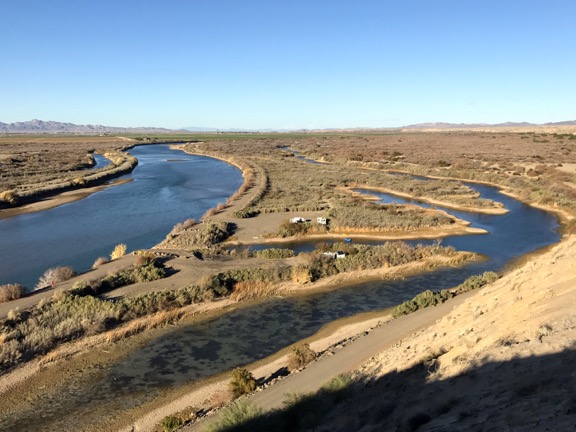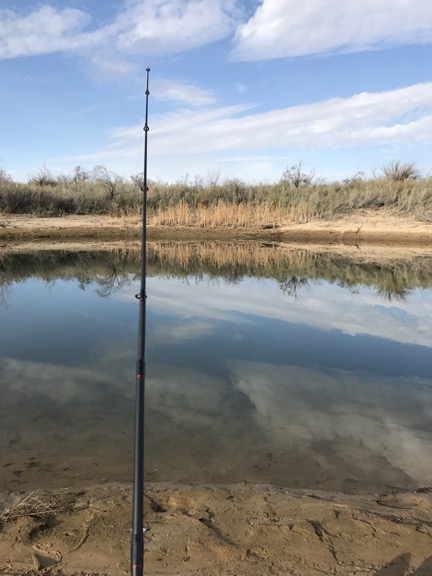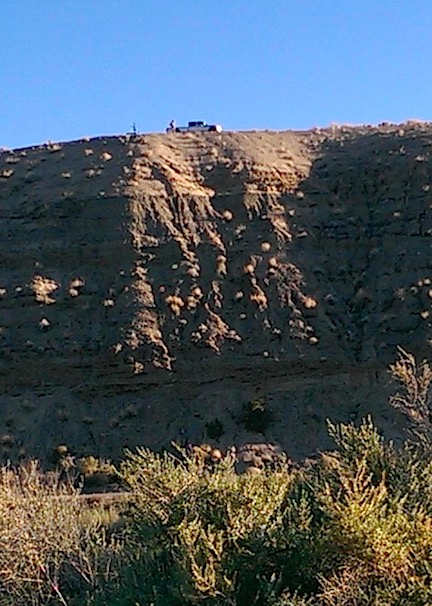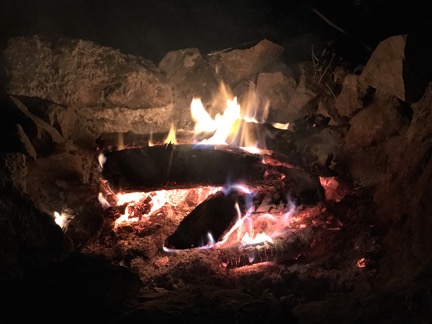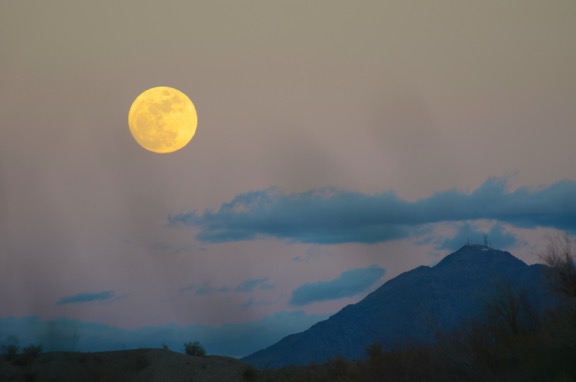The saga of my recent aircraft purchase.
By now, regular readers know that I crashed the helicopter I bought brand new in 2005 and have owned for the past 13 years, N630ML. I started looking for a replacement almost immediately. After all, cherry drying season was just a few months away and I needed to make sure I had something to fly.
To Buy or Not to Buy
As I mentioned in another blog post about the aftermath of the crash, I did have a brief period when I considered not replacing the helicopter at all. It would have been nice to just stick that big, fat insurance check into the bank and ease out of my flying career. I could still manage my cherry contracts and, without the cost of a helicopter, would probably net nearly as much money as I would if I flew. To this day, I wonder whether I should have done just that.
But the truth of the matter is, I’m not ready to stop flying. I enjoy exploring the world around me from the air. I enjoy giving passengers an opportunity to see the area from a new perspective. I enjoy giving kids their very first helicopter rides at events. I enjoy landing Santa Claus next to Pybus Public Market in downtown Wenatchee with hundreds of kids and parents looking on. And yes, sometimes I even enjoy cherry drying.
So although I’ve been thinking about retirement for the past few years, I didn’t expect to do so until 2025 at the very earliest. After a lot of thought about it, I still think that’s a good idea. I’ll keep flying until it isn’t fun anymore — or my body tells me to give it up.
Of course, that didn’t mean I needed to buy a helicopter. I could lease one. I did talk to one leasing agent about that with the idea of leasing only half a year. I discovered that leasing companies don’t like short term leases and that if I did lease, I wouldn’t make any money at all. Lease rates and minimums are just too high for organizations that don’t fly at least 25 hours a month. I fly a lot less than that.
The Search Begins
But I’m getting ahead of myself here. I actually started shopping before I started thinking — which is never a good idea.
A few days after the accident, my insurance agent recommended a helicopter broker based in Florida to start my search. If you’ve ever owned a Robinson helicopter I guarantee you’ve gotten at least one postcard mailing from this guy. I’d actually met him once when I was researching operations to do the overhaul on Zero-Mike-Lima; his company had an authorized Robinson service center. I started working with him right away to find a replacement.
I figured that I should replace the helicopter with something just like it. Zero-Mike-Lima was a 2005 R44 Raven II model just a year out of overhaul. I’d insured it for what I thought it was worth: $350K. I had a loan on it to pay for part of that overhaul. I figured that the insurance would pay off the loan and give me enough for a good downpayment on another helicopter in about the same condition. I could get another loan for about the same amount and continue operating as if nothing had happened.
I soon realized that I’d erred in estimating the value of Zero-Mike-Lima — by about $50K. That became apparent when I started looking at what was available via the broker’s listings. Still, I found one in Canada that I really liked, mostly because it was just like Zero-Mike-Lima on the inside. I think it was a year newer. Tan leather with a standard VFR panel, just out of overhaul. They were asking $389K.
I spoke to a bunch of people who know about helicopters. (I was, after all, still at Heli-Expo.) Several said that the Canadian version of the FAA — I think it’s the CAA? — had higher standards than the FAA so the ships were usually in better shape. Others said the Canadian helicopter market was soft and that I should offer 10% less than the asking price. 10% was nearly $40K and I didn’t want to insult anyone. So I offered $360K, keeping in mind that I’d be spending $10K to $20K to get it into the country and registered with the FAA.
I was turned down with no counteroffer.
I exchanged numerous emails and a few phone calls with the broker. What was the best price I could get? Would the seller help me get the ship into the US? Would they pay for import taxes or fees?
The seller remained firm on the price and wouldn’t even transport the helicopter to the border less than 50 miles away.
Now keep in mind that I’ve bought and sold more than a few large ticket item assets in my life: helicopters, condos, apartment buildings, homes, cars. I’ve never bought or sold at the asking price. So when these Canadians stayed firm, I was surprised and more than a little pissed off. Fuck them, I thought in typical native New Yorker style, and I kept looking.
By this time, I was on my way home from Vegas in my truck with my camper and boat behind me. I stopped in Mcminnville, OR, to look at another ship just out of overhaul. It seemed to be in good enough condition and the seller was definitely motivated. But there was something about the ship that I just didn’t like. The inside looked tired. And I definitely did not like the panel, which was set up for instrument training and had an unfamiliar audio setup. The seller was asking $390K and I got hints that he’d accept less. I told him I’d think about it and continued my trip, part of me thinking I should make an offer while the other part had a problem paying that kind of money for something I didn’t really like.
Online Shopping
With no other options coming from the broker, it was time to get serious. I went online to start my search in earnest about two days after I got home from California with my truck and camper. That was about ten days after the accident.
I was still pretty sore and not feeling 100%. I’d been pushing myself hard since the accident, traveling to Las Vegas the very same day, attending Heli-Expo every day the following week, and then driving from Las Vegas to my Washington State home over a period of five days. (I just counted them and can’t believe it took me that long. I would normally do it in two days.)
So on Thursday morning, I sat at my breakfast bar with a cup of coffee and my laptop and started searching for options on the three sites most likely to have listings for what I was looking for:
- Trade-A-Plane is where I sold my first helicopter.
- Controller was recommended by a few friends.
- Barnstormers.com was recommended by the mechanic who had done the overhaul on Zero-Mike-Lima.
I found the most listings on Controller. I started making notes and sending email messages. I started thinking and re-thinking my options. Maybe I should get a ship that was a little farther out of overhaul? One that would cost less so I could take out a smaller loan? I started making and getting calls to and from sellers. I was having trouble keeping the options straight in my head.
And that’s when the headaches started.
You see, although I wasn’t knocked unconscious in the accident and I didn’t have any obvious head injuries and I wasn’t diagnosed with a concussion or anything like that, my brain wasn’t quite ready to go back to work. When I described the accident and the bouncing the cockpit had done on the way to its final resting place with me inside it to the local doctor who looked at my leg injuries, she suggested that I may have been concussed. She recommended that I “rest my brain” for a few days.
That was on Thursday afternoon. I took her advice for the rest of that day.
I tried working on the listings again the next day and was fatigued with a headache before 10 AM. Crap. I spent the rest of the day taking it easy.
In fact, I didn’t pick up the search until the following Monday.
Analyzing My Options
By the time I resumed my search, I was feeling a sense of urgency — even though I still had two months to get a helicopter for cherry season. I got back to the listings and started really thinking about what my options were. Fortunately, my brain was ready for the task and the headaches did not return.
Here’s what I came up with:
- Buy a new one. Well, the prices of R44s have really gone up since I bought mine in 2005 for $346K loaded. A similar ship would cost $550K or more and I’d have to wait months for it. This option was really no option in my situation.
- Buy a newish one. I figured that if I bought one that was 2012 or later model with low enough hours I could get 6 or more years out of it before having to overhaul it. But I simply couldn’t find any in this category.
- Buy a recently overhauled one. This is the option I’d been working with: replace my recently overhauled ship with one just like it. The prices ranged from around $390K to $450K. It was doable if I was willing to walk into a big, fat loan. I wasn’t sure that I wanted to.
- Buy a partially overhauled one. This is where it gets weird and where you really need to know what you’re buying. Robinson helicopters have a required 12-year or 2200 hour (whichever comes first) overhaul to maintain airworthiness. This cost me about $220K at the end of 2016; my ship was almost 12 years old and had about 2050 hours on it. But there’s a loophole for folks who want to save money. If the ship is 12 years old and has a lot less than 2200 hours on it, you can replace the calendar-limited parts in a partial overhaul and leave the hours-limited parts for later replacement. I cannot believe how many ships I found that fell into this category.
- Buy one that would need overhaul within the next 4 years. There were a handful of ships like this out there and they were cheap. So cheap that I wouldn’t need a loan at all. The benefit of that is that the $30K I paid annually on a loan could go into a savings account for the overhaul.
The partial overhauls looked promising — at first. One of the ones I found was a particularly sharp looking, fully loaded 2006 ship that was selling for only $300K. Is it possible that I could get it and fly it commercially? The short answer is no. I did my research and discovered that the Lycoming engine also has a 12-year overhaul requirement. It would cost about $50K and take at least 2 months to have the engine pulled and overhauled. Although I wouldn’t mind spending the money, I didn’t have the time.
Also in this category were ships with various life-limited parts that are normally replaced in overhaul that had been replaced for various reasons during the life of the ship, leaving it very unclear what still needed to be done and when. My head spun just thinking about these ships.
And then there was the guy who argued with me that the bladder tanks really weren’t required and offered to let me talk to his mechanic for an explanation of why they were actually bad. Needless to say, he didn’t get any traction with a person whose life may have been saved by those tanks.
I found two ships that had been overhauled once and had about 400 hours left until the next overhaul. They were selling for $200K and $220K respectively — I wouldn’t need a loan for either one. One was an instrument training ship, the other wasn’t. One had a hook — another thing I didn’t want or need. I was leaning toward the one in Tennessee and started looking for a good mechanic to go out there with me for a pre-purchase inspection. I was looking at the cost of two round-trip plane tickets to Knoxville, an overnight stay, and an inspection fee: at least $6K total and two full days of my life. And that’s before buying it.
I wasn’t a happy camper.
Enter N7534D
All this time, I’d been texting on and off with Paul, the Director of Maintenance at Quantum.
Quantum did Zero-Mike-Lima’s overhaul in late 2016. I chose them because I think Paul is the best Robinson mechanic on the planet and the price they quoted was fair. I have a lot of respect and admiration for Paul and I know he’d never steer me wrong.
He mentioned offhand that Quantum had a 2005 R44 Raven II for sale. I eventually asked him for details. It sounded just like what I needed; it had (or would have) everything required for Part 135 operations without things I wouldn’t need (like an instrument training panel or hook). I asked for pictures. I swear my heart must have skipped a beat when I saw the interior: it was almost identical to Zero-Mike-Lima.

Okay, so it’s a terrible picture. But it’s the only one I have from the day I picked up N630ML at the Robinson factory in Torrance, CA in January 2005.
And here’s where I need to take a step back and be honest with myself and my readers. Understand that after ordering a helicopter to my specifications, flying it brand new from the factory, putting more than 2100 hours of time on it, using it to earn a living, having so many adventures with it, and seeing it through overhaul after 12 years of ownership, I really loved Zero-Mike-Lima. Yes, I had developed a possibly unhealthy bond with a machine. The biggest problem I was having with choosing its replacement was the possibility of ending up with one that was so different it wouldn’t feel like mine.
So when I saw the inside of N7534D, I felt as if I was looking at Zero-Mike-Lima. It would be an easy transition for me.
Of course, the outside was a different story. It was “Ford Deep Impact Blue” — an unfortunate color name given the circumstances of my need to purchase. (It also reminded me of the BMW motorcycle my wasband had crashed in Arizona years before.) But when I fly a helicopter, I don’t see the outside.
The ship had one problem: it had only 216 hours until it needed an overhaul. I’d need to stretch that through two flying seasons to save up for a good downpayment on an overhaul I’d likely need to start in November 2019.
But it also had a lot going for it. It was the first R44 with air conditioning, which was kind of cool (no pun intended) but also meant I could dry cherries without taking off a door for ventilation. It had been owned and operated by Quantum for its entire life. That meant it was always hangared and well maintained by a crew managed by my favorite mechanic. It had been used for training, but apparently not much. It had been on a Part 135 certificate so it had (or would have) all the instruments needed to get it on my certificate. It already had ADS-B Out installed, which would save me at least $3K before the deadline for installation at the end of 2019. And knowing that I needed a radio altimeter by October, Paul offered to pick up the cost of labor on the installation of one, saving me about another $5K.
So for about the same price as the other two ships I was looking at, I could get one that would satisfy the FAA without getting a loan or dealing with a pre-purchase inspection. There would be no worries or doubts or concerns about what I’d bought. It would be a pretty much stress-free purchase. I could just fly down to Arizona with a check and fly home with it.
And that’s pretty much what I did. I didn’t even go down to look at it before committing to purchase it. I just texted and talked with Paul to make sure it had everything I needed/expected. I sent my friend Woody to take a look at it; he reported back that the black stripe made it look “bitchin.” I sent a check for the radio altimeter hardware purchase. I waited for my insurance check and sent it to the bank to pay off the loan, then got the net directly deposited to my savings account. I got a small bridge loan from Bank of Laura Langer, then got a certified check for the purchase price, stuck it in my wallet, and flew First Class down to Phoenix on Alaska Air. That was on Wednesday.

Here I am with Penny, sitting in the pilot seat of N7534D in Hawthorne, NV, on our way home this past Saturday. (Photo by my friend Janet, who came along for that long ride.)
On Thursday, I saw it for the first time, got the warm and fuzzy feeling I was expecting, handed over the check, signed a bunch of papers, and immediately started installing the mounts I’d need for my iPhone and iPad and stowing various other equipment on board. Penny got to sit in the front seat while I worked.
On Friday, I was on my way home. But that’s another story.

